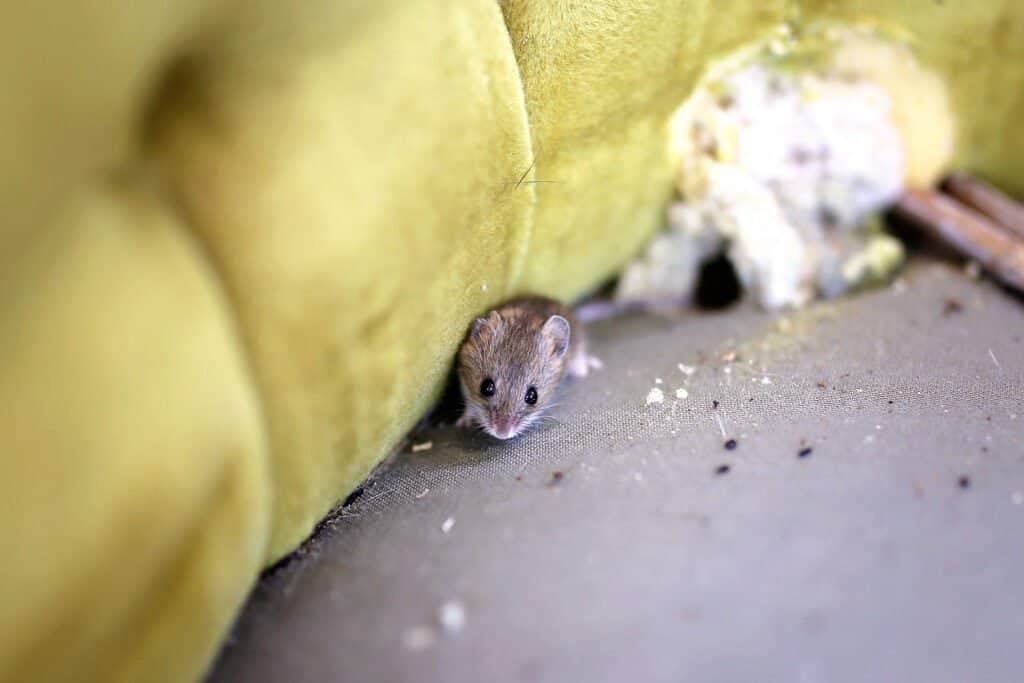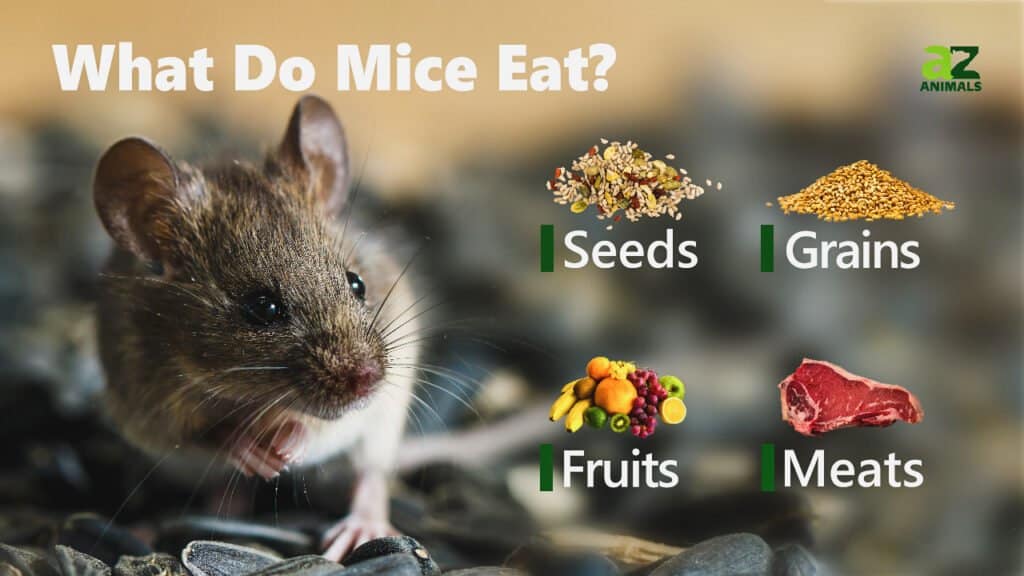Mice may be teeny tiny cute mammals, but they bring more damage than “awwws.” Apart from their capacity and habit of gnawing on important items such as clothes, furniture, wires, and others, their urine and droppings are also a concern. Many households struggle with mice infestation, but you don’t have to wait for the tiny rodents to show up to take care of the issue.
To stop this rodent infestation from growing larger, take action as soon as you start to observe mouse droppings. But the thing is – mouse droppings are too small to see and notice, and most of the time, they can even be mistaken for food or other waste. So before you act on the ongoing mice infestation problem, you must first identify mouse poop. So, what do mouse droppings look like? Below, we will explore all about mouse poop, the dangers it can bring, how it is different from rat poop, and many other facts.
Is There a Mouse in Your Home?

Gnaw marks, scratches, and mouse poop are signs of mice presence.
©MainelyPhotos/Shutterstock.com
Mice infestations are frequently detected by the slightest pieces of evidence, such as gnaw marks, scratches, nests, and, yes, mouse poop. Signs of mice may be there before you see one, but if you don’t know what to look for, you can not spot them! Knowing how to recognize mouse poop—from “mice rice” to “droppings”—can offer you an advantage in eliminating and preventing these infestations in your home.
You will have the opportunity to correctly clean up mouse excrement if you can identify and recognize rodent droppings. This will assist in preventing illnesses in your home and disposing of them before the issue becomes out of control.
What Do Mouse Droppings Look Like?

Mouse droppings resemble grains of rice.
©ChristinLola/Shutterstock.com
The size of a mouse dropping is between 3/16 to 1/4 of an inch, and it resembles a grain of rice. Depending on the age of the poop and the mouse’s diet, the pieces often have pointy ends and colors that range from blackish brown to gray.
Fresh mouse excrement is black. Over the course of the following week, it turns brown, and eventually, it turns gray. The droppings from a rodent that has taken pesticide from a bait station may have the same hue as the bait. Fresh droppings are supple, wet, and flexible. However, older ones will disintegrate when touched and have the consistency of mud when crushed.
The size of the mouse that dropped it, the potential number of mice infesting your home, and whether or not they are still active are just a few of the numerous facts you may infer from mouse droppings.
Mice leave around 50 to 75 pellets each day. That’s a lot of poop! The quantity and size of the droppings you observe can aid in identifying the type and severity of the pest problem you are dealing with. These animals will poop while they are traveling, so you can locate their droppings along their routes and in the areas where they hunt for food. Even though they like to keep their homes tidy, they occasionally poop close to their nest but won’t use the restroom there.
Does Mouse Poop Smell?
While mouse pee smells strongly of ammonia, the droppings may not have any discernible odor. Although you might not be able to detect their excrement by smell, you might detect a hint of ammonia from the urine they leave behind, and you can be sure that more than one of them is responsible for it.
What Do Mice Eat?

The foods that mice eat can vary depending on where they live and the season. A mouse’s diet comprises grains, fruits, and seeds. They prefer high-carbohydrate foods; if they can find them, they’ll choose berries or cereals like oats. They will also eat grasses, roots, and even tree bark if these foods are unavailable. Mice close to people frequently rummage through trash cans looking for food scraps. They will occasionally eat insects like grasshoppers, beetles, and caterpillars. Additionally, they have been known to steal eggs from bird nests and kill and eat young birds or other small mammals.
How Do Mouse Droppings Differ from Other Pests?
It might be confusing to recognize droppings, even though doing so is a useful approach to determining what kind of pest problem you have. House mice, deer mice, roof rats, Norway rats, and even squirrels or raccoons can cause rodent infestations.
Rat and mouse excrement differ significantly in several important ways. Rat excrement measures a half-inch or longer, although mouse poop frequently doesn’t measure more than a quarter of an inch. You may easily distinguish between these two infestations since rat poop is also glossier than mouse poop.
The shape of squirrel droppings is similar, although they are slightly larger and thicker. The excrement of raccoons resembles that of small dogs more closely.
Is Mouse Poop Harmful?
Without wearing protective gloves, an OSHA-approved respirator, and available cartridges, one should avoid handling mouse droppings since they may contain dangerous bacteria, viruses, and illnesses.
Hantavirus Pulmonary Syndrome (HPS) can also occur due to inhalation of hantaviruses. This can happen if rodent urine and feces that have been exposed to the hantavirus are mixed with the air. Furthermore, the virus may be transferred if a person contacts mouse or rat urine, droppings, or nesting materials and then touches their eyes, nose, or mouth.
Where Will You Find Mouse Poop?
If you have mice in your home, the kitchen is where you will most likely locate mouse droppings. This is because mice have access to an endless supply of food in your pantry, cupboards, and countertops. Droppings from mice and cockroaches can frequently be found under the kitchen sink, in food containers, and on the back of your cutlery drawer. If food is present or once was, mice poop can also be found in bedrooms. Mice like basements, attics, and garages, especially if you keep suet, extra food, and bird food in these locations.
The photo featured at the top of this post is © Paulpixs/Shutterstock.com
Thank you for reading! Have some feedback for us? Contact the AZ Animals editorial team.







